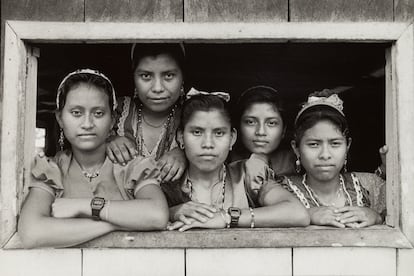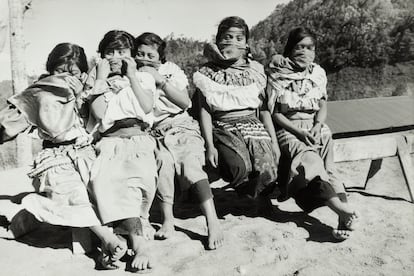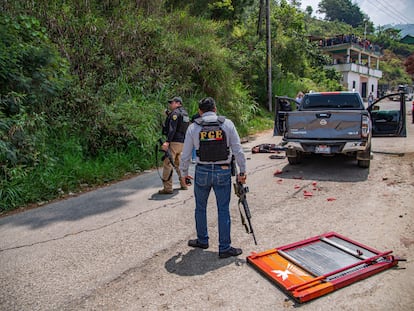
Angeles Torrejón focused her lens on women who left everything to go to war
The Mexican photographer has a new exhibition documenting the marginalized, rural people of her country
In April 1994, Angeles Torrejón made her way through the Chiapas jungle in Mexico driving an old truck to the stronghold of the Zapatista Army of National Liberation (EZLN). The Zapatista-led conflict in the country’s southernmost state had calmed down and was no longer front-page news. Torrejón was working for the Imagen Latina photo agency and told her editor she wanted to go to Chiapas to photograph the EZLN. “Everything’s over — why do you want to go now?” was her editor’s response. However, Torrejón wanted to focus on a specific subject: women. She found it fascinating how women from different backgrounds and traditions left everything behind to join the Zapatista Army in an Indigenous struggle that profoundly affected Mexico in the 1990s. Etched in her memory from that trip is an image she couldn’t photograph: five armed women with masked faces stopped her truck and asked her what she was doing there. After passing this first test, EZLN leader Subcomandante Marcos welcomed her into the community. Torrejón earned their trust on that visit and was welcomed back many times.

A long walk in the dark
In 1995, Torrejón was awakened late in the night by a woman’s screams. The women and children at La Realidad — the Zapatista base where she was staying — were ordered to evacuate immediately. They walked through the jungle all night without knowing why. Torrejón vividly remembers the long line of women and children snaking through the darkness. She couldn’t take any photos, since using a flash in the darkness would give them away. Torrejón says she didn’t know what was happening, but could tell that something was wrong — the exodus felt like an escape. The next morning, she took her first photos of the fleeing Zapatista women as the sun came up over the Chiapas highlands. When they returned to La Realidad and found nothing but destruction, they learned why they had to escape. The Mexican government had discovered Subcomandante Marcos’ real name and sent the army after him. Torrejón immediately returned to Mexico City and developed the photos that would be published the next day in La Jornada newspaper and the weekly Proceso magazine.
Angeles Torrejón’s Correspondencias photo exhibit opens on October 18 at the Image Center in Mexico City. The exhibition presents the photographer’s captivating images from three decades ago, providing a voice to the women of that era and spotlighting social injustices that persist today.
Sign up for our weekly newsletter to get more English-language news coverage from EL PAÍS USA Edition
More information
Archived In
Most viewed
- Alain Aspect, Nobel laureate in physics: ‘Einstein was so smart that he would have had to recognize quantum entanglement’
- Alvin Hellerstein, a 92-year-old judge appointed by Bill Clinton, to preside over Maduro’s trial in New York
- Gilles Lipovetsky: ‘If you want to live better and fall in love, take Prozac, don’t look to philosophy’
- Cuba confirms death of 32 of its citizens in the US attack against Venezuela
- Why oil has been at the center of Venezuela-US conflicts for decades

